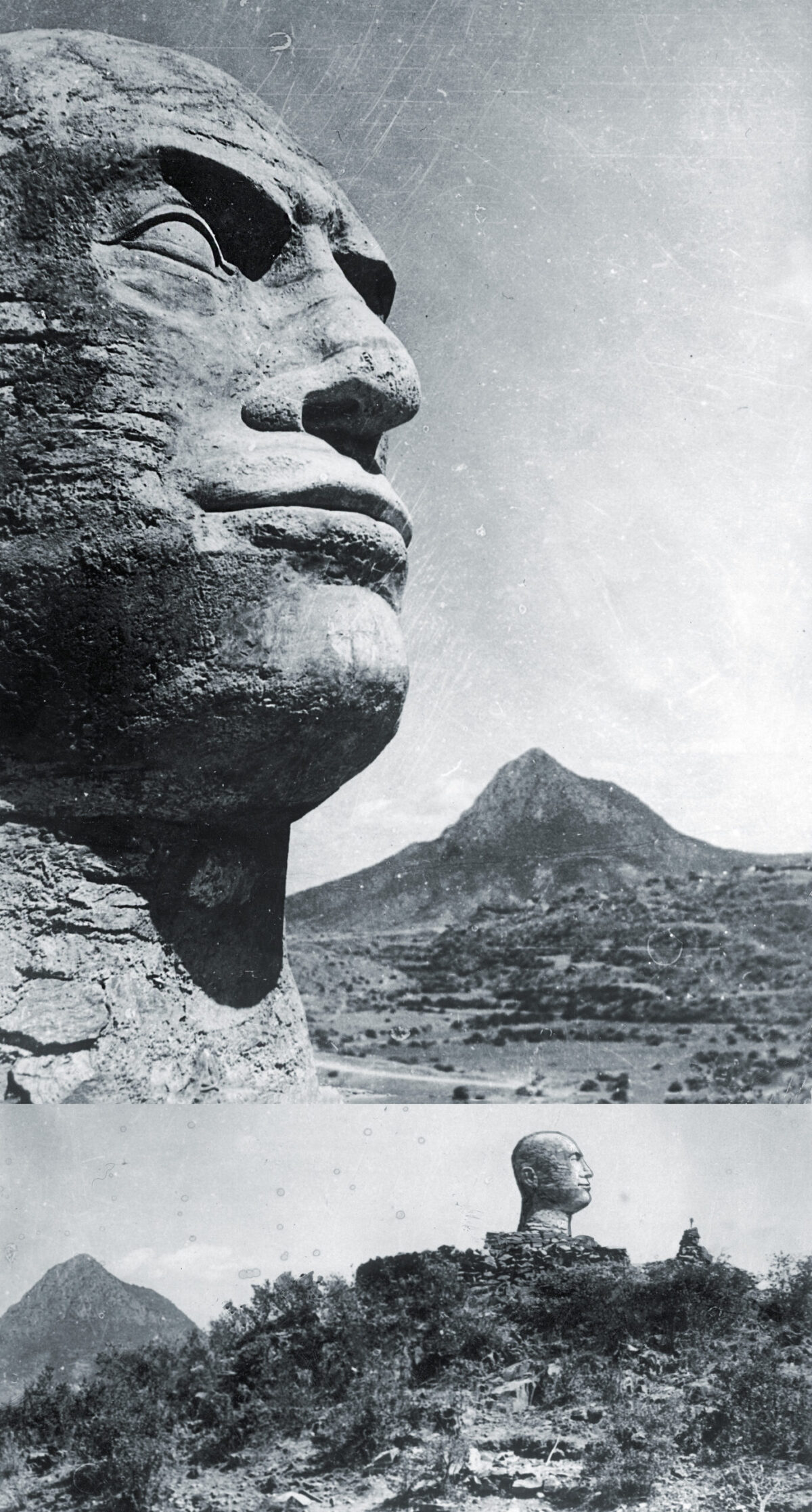Closer to Easter Island than Mt. Rushmore, this garish bust of Italian dictator Benito Mussolini blighted the landscape of Adwa, Ethiopia, in 1936. Forty years prior, in 1896, would-be Italian colonizers were defeated and embarrassed at Adwa by the army of Ethiopian Emperor Menelik II in the First Italo-Ethiopian War. Desperate to have an African colony like other European powers, Italy had mounted an ill-fated and blundering campaign into the most well-protected nation of pre-colonial Africa.
The stunning defeat of the Italians at Adwa would linger as a symbol of national failure for Italian nationalists, and the Second Italo-Ethiopian War was as much a war for pride as it was for territory. When Mussolini’s technologically-superior fascist armies forced a retreat and conquered Adwa four decades later in 1936, jubilant soldiers didn’t merely plant a flag, but planted a head.
According to the magazine L’Illustrazione Italiana, where this photograph was first published, “soldati-artisti” spontaneously carved this smirking likeness of il Duce on the battlefield as an outpouring of their passion. The head would indeed witness Italian victory in Ethiopia, with the emperor, Haile Selassie I, sent into exile in Britain. For a few years, Italy got to be the colonial power it had wanted so badly to be.
But it was not to last, as Selassie found support in Britain for his rebellion. From exile, he organized the Arbegnoch, Ethiopian resistance fighters who would plague the Italian forces occupying their nation even as World War II began in earnest. In a familiar story for that war, Italy found itself fighting on too many fronts, and was unable to maintain its tenuous hold on the fiercely independent mountain kingdom, who regained independence in 1941.
Just as the artist who carved the head was anonymous, so was its destructor, and it’s unknown if an Ethiopian or British soldier had the pleasure of decapitating the bust. In the end, the real Mussolini would meet a similar fate just four years later.
historynet magazines
Our 9 best-selling history titles feature in-depth storytelling and iconic imagery to engage and inform on the people, the wars, and the events that shaped America and the world.


